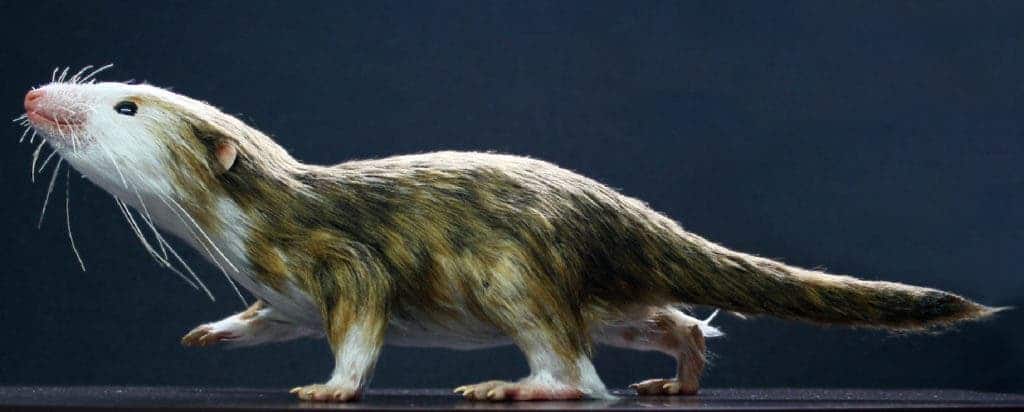Mammals cashed in big on growing smaller, new research reveals.

Image credits Bob Nicholls.
The bubbly evolution of mammal species over the last 200 million years is owed in no small part to their propensity for growing smaller, a new paper reports. This trend is most evident when compared to that of the dinosaurs — the former de-facto winners of the evolutionary lottery — which spawned some of the largest beasts to ever walk the Earth.
Smaller, better, harder, stronger
When mammals first started popping up around 200 million years ago, our planet was still dominated by dinosaurs. So for the following 150-ish million years, mammals literally and figuratively kept a low profile. While dinosaurs were growing bigger, mammals shrank in size.
An international team of researchers set out to understand why and how this shift took place. Using modern computer modeling and analysis, they analyzed the skeletons of our tiny ancestors to better document their evolutionary path.
Mammals stand out among all other vertebrates on the planet in that they have a single bone bearing teeth for their lower jaw. Everyone else has more complex lower jaws, formed from no fewer than five bones linked together, the team explains.
As mammals evolved, most of these bones shrank in size and became more simplified. The new jaw retained a single bone, and the others moved higher in the skull, into the inner ear. They now help us hear.
The team focused their research efforts on understanding how this lower jaw restructuring process took place — as they were occurring, these changes had to allow the animal to keep feeding itself and hear, else they wouldn’t be viable organisms. Starting from X-ray computed tomography (CT) scans of several fossil skulls and lower jaws, the team created digital models of the bones. Later, they ran these models through extensive computer simulations to see how they would function.
For smaller animals, the team reports, jaw bones experience reduced stress when feeding. The jaws themselves could thus become simpler and tinier while still retaining enough structural strength to bite through prey.
“Our results provide a new explanation of how the mammalian jaw evolved over 200 million years ago,” says Dr Stephan Lautenschlager, lead author of the paper and lecturer at the University of Birmingham.
“Getting very small appears to have been crucial for our mammalian ancestors. This allowed them to reduce the stresses in the jaw during feeding and made the restructuring of the jaw bones possible.”
University of Bristol Professor Emily Rayfield, who co-authored the study, says that the research addresses a 50-year-old open debate in paleontology.
“Using computational methods we can offer explanations to how our mammalian ancestors were able to maintain a working jaw while co-opting bones into a complex sound detection system,” she explains. “Our research is about testing ideas of what makes mammals unique among the animal kingdom, and how this may have come about.”
The paper “The role of miniaturisation in the evolution of the mammalian jaw and middle ear” has been published in the journal Nature.






